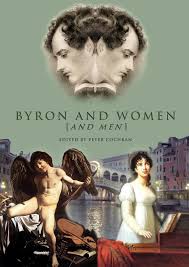 Byron and Women [and Men]
Byron and Women [and Men]
Edited by Peter Cochran
GEORGE GORDON, LORD BYRON (1788–1824) was the reigning male sex symbol of the early 19th century. His sporadic personal beauty (alternating between plumpness and emaciation), his flamboyant lifestyle, and his real and imagined affairs with women all fed the image. But Byron’s love life also included males. His bisexuality was known, not only within his own close circle, but “on the street.”
There is a cultural taboo against acknowledging homoeroticism in the lives and works of canonical authors. The homoeroticism in Walt Whitman’s Calamus poems was immediately recognized by such gay men as John Addington Symonds and Edward Carpenter, but biographers shied away from it. When Charley Shively proved that Whitman really did have sex with his boyfriends in two pioneering works—Calamus Lovers: Walt Whitman’s Working Class Comerados (1987) and Drum Beats: Walt Whitman’s Civil War Boy Lovers (1989)—this should have settled things. But no, the “good gray poet” was until recently presented as straight or emasculated. Confronted with evidence of Byron’s bisexuality, Byron specialists have been hard-pressed to deny it outright, but they have done their best to minimize it.






